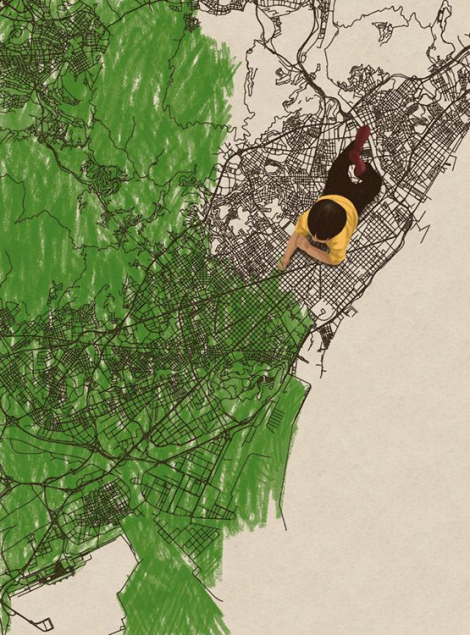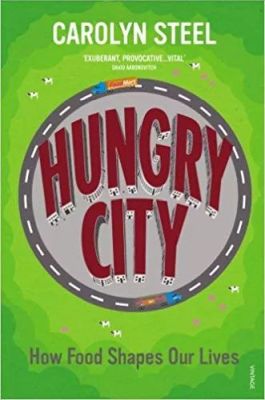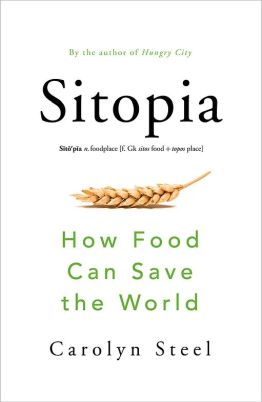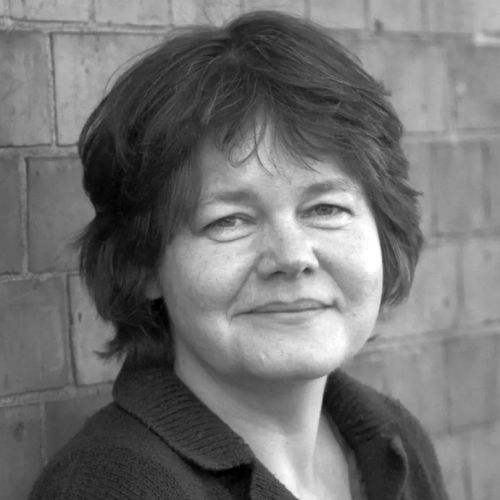Sitopia: Rethinking Our Lives Through Food
- Dossier
- Sep 21
- 13 mins

We live in a world shaped by food; a place the author calls sitopia, or ‘food-place’. By valuing food and giving communities control over their land, we could see a totally new pattern of development. Instead of megacities endlessly expanding, new rural communities would develop. And we would be on the way towards a good sitopia.
How will we live in the future? In some ways, the question has never felt more open, yet in others, it has never felt more constrained. The coronavirus pandemic has disrupted our lives as never before, opening our eyes to a raft of realisations both good and bad: the fact that our relationship with nature is dangerously out of kilter; the fact that, while possessing astonishing technology, we can lack the wisdom to use and share it wisely, and above all, the fact that, as top predator on the planet, we share responsibility for preserving it for future generations. In short, we are all in this together.
The contrast between seemingly endless possibility and profound limitation is the paradoxical condition of our age. In essence, it represents the clash between our remarkable technological prowess and the finite bearing capacity of our planet. For some, the answer to this conundrum is to imagine colonising space, while for others the challenge is both more local and immediate: to come up with a vision of a good life that allows us to live in harmony on earth, to which the vast majority of our fellow humans can sign up. I believe that the most powerful way of doing this is through the medium of food.
Why food? For one thing – as I probably don’t have to explain to many Barceloní – food occupies a unique place in our lives. The fact that we all need to eat, and that eating represents our most common source of pleasure, means that food sits right at the nexus between our two most important set of relationships: with nature and with each other. Food is the bond that ties us, both to our fellow humans and to the lands and seas that feed us, and as it does so, it shapes our minds, bodies, homes, workplaces, politics, economics, cities, landscapes, environment and climate. Whether or not we realise it, we live in a world shaped by food; a place I call sitopia, or food-place (from the Greek sitos, food + topos, place).[1] Since most of us in the industrialised world don’t value food enough, however, we live in a bad sitopia.
Living in a modern city like London, it can be hard to appreciate how powerfully food shapes our world. Industrialisation has obscured the vital connections without which urban life would swiftly grind to a halt: the complex supply chains that bring our grain, oil, beans and sardines from the fields and seas where they are produced to our factories, supermarkets, cafes and kitchens. The food on our plates is an emissary from another world; one that increasingly resembles a science-fiction nightmare rather than the rosy pictures we may imagine. From vast feedlots and sheds full of tragic animals to monoculture grain fields harvested by drone-guided combines, huge trawlers dragging nets across seabeds or robotised production lines filleting fish at breakneck speed, the industrial processes that underpin our modern existence are as efficient as they are ruthless. In many ways, modern agri-food epitomises the fateful combination of technological capacity and ecological indifference that now threatens us and our planet.
[1] See Steel, C. Sitopia: How Food Can Save the World. Chatto & Windus, London, 2020.
Industrial farming has critically weakened biodiversity, while our encroachment on wilderness exposes us to new disease.
Our modern way of life is based on the premise of cheap food; yet, when you stop to think about it, no such thing could exist. The beans, carrots, chicken and cheese that we eat consist of living things that we kill in order to live. Food, in other words, is life; to cheapen it is to cheapen life itself. Yet, for the past two centuries, that is precisely what we’ve been doing. If we were to include the numerous externalities of industrially produced food in its price – climate change, deforestation, mass extinction, pollution, water depletion, soil degradation, declining fish stocks, obesity, diet-related disease and zoonotic pandemics – such food would become instantly unaffordable; which, in a very real sense, it already is.
The coronavirus pandemic has shown the truth of this, revealing just how out of kilter our relationship with nature has become. Industrial farming has critically weakened biodiversity, while our encroachment on wilderness exposes us to new disease. Experts have long warned of such dangers, yet it was only when supermarket shelves were stripped bare at the start of last year’s lockdown that the threat became real for many. In that moment, the illusion of easy plenty was shattered. The shelves soon filled up again, yet the underlying issues haven’t gone away. All of which raises the question: what would happen if we were to revalue food? The answer is that there would be a revolution, not just in the way we eat, but in how we live. Indeed, such a move is arguably the single most powerful thing we can do in order to make our lives more healthy, equitable and resilient.
 Illustration © Riki Blanco
Illustration © Riki BlancoUrban Paradox
One advantage of rethinking our lives through food is that we have plenty of examples of how to do it from our past. Indeed, it would be little exaggeration to say that life in the pre-industrial era revolved around the question of how to eat – not least when it came to the thorny problem of how to feed cities. Both Plato and Aristotle grappled with the problem, concluding that the size of the polis, or city-state, was crucial: too small, and it would lack the resources to defend itself; too big, and it would struggle to feed itself from its own territories. The ideal arrangement, both philosophers concluded, was one in which every citizen would have a house in the city and a farm in the countryside from which to feed it. Scaled up many times, such household management, or oikonomia (from oikos, household + nemein, management) would render the polis self-sufficient, with its urban and rural regions in perfect balance.
Although few pre-industrial cities achieved such an ideal, all did in fact practise some form of oikonomia. Most were highly productive, producing every sort of food that could be locally grown. Towns and cities were invariably surrounded by market gardens, orchards and vineyards, fertilised with liberal doses of ‘night soil’ (human and animal manure), carefully collected for the purpose. Most households kept pigs, chickens or goats, feeding them up on kitchen scraps, while suburban households specialised in dairying and fattening up cattle (which often walked many miles to market) on brewers’ spent grain. The one exception to all this was the staple food of cities, grain, which could neither be grown in the city nor easily transported, being heavy and bulky in relation to its value. For this reason, most pre-industrial cities remained small: in 1800, just three per cent of the global population lived in settlements of 5,000 or more.[1]
Maritime cities thus had a considerable advantage over their landlocked neighbours, since they were able to import their food from overseas (in the pre-industrial world, transport by sea was about 40 times cheaper than overland).[2] Rome famously pioneered this approach, conquering neighbouring territories including Sicily, Sardinia and North Africa in order to extract grain in the form of tax. With an astonishing one million citizens at the height of its empire, the city imported grain, oil, wine, ham, honey and a fermented fish sauce called liquamen from across the Mediterranean, Black Sea and North Atlantic coasts.
The first city to fully outgrow its local hinterland, Rome demonstrated what I call the ‘urban paradox’: although we who live in cities think of ourselves as urban, the fact that our food comes from elsewhere means that we really dwell on the land.
Today, it’s easy to see parallels between Rome’s food culture and our own. The first city to fully outgrow its local hinterland, Rome demonstrated what I call the ‘urban paradox’: although we who live in cities think of ourselves as urban, the fact that our food comes from elsewhere means that, in a deeper sense, we really dwell on the land. Wherever we live, however, we humans clearly need both society and nature in order to thrive. This duality lies at the heart of our dilemma: the more we gather together in cities, the further we get, both physically and mentally, from our sources of sustenance.
Lessons from Letchworth
The Greek ideal of the city-state – effectively a direct response to the urban paradox – has remained dominant in utopian thought ever since. Indeed, two of the most influential utopian tracts ever written – Thomas More’s 1516 Utopia and Ebenezer Howard’s 1902 Garden Cities of To-Morrow – are clear descendants, arguing, as they do, for a return to the city-state model.
More’s Utopia is an imaginary kingdom of independent city-states, arranged one day’s walk from one another. Utopians live in large urban blocks with generous back gardens, in which they grow beautiful fruit and vegetables, and children are taught to grow food from a young age.[1] All citizens take turns in the fields, spending a mandatory two years there, and those who enjoy farming (which everyone does) can farm permanently if they choose. All land and property in Utopia are held in common, and families and neighbourhoods share regular communal meals, which adults and children cook and eat together.
[1] More, T. Utopia (1516). Trans. Turner, P. Penguin Books, London, New York, 2003, p. 53.
Howard dubbed his garden city a ‘Town-Country Magnet’, arguing that a network of cities of limited size surrounded by countryside could provide the benefits of urban and rural living, while negating the downsides of each.
Utopia is notable for its obsession with food, as is Howard’s garden city, which is essentially More’s Utopia with railways. Recognising our human need for both society and nature, Howard dubbed his garden city a ‘Town-Country Magnet’, arguing that a network of cities of limited size (with a maximum of 32,000 residents) surrounded by countryside could provide the benefits of urban and rural living, while negating the downsides of each.[1] Crucially, all the land occupied by the garden city was to be collectively owned by its residents in the form of a public trust, so that when land values rose as a result of the city’s presence, it would be the citizens, not private landowners, who would benefit.
In 1903, Howard got the chance to realise his dream, when a group of leading industrialists backed him to build a prototype garden city in the village of Letchworth, Hertfordshire, 39 miles north of London. At first all went well, but the project struggled to attract investors prepared to accept the low rates of return on offer, leading Howard’s backers to renege on their promise to hand over part of their rent to the city, prompting Howard to resign from the board.
Although Letchworth failed to fulfil Howard’s vision, it still represents a significant milestone in urban planning, boasting a lively community trust as well as the world’s first protected ‘green belt’. Yet the garden city dream ultimately failed because it didn’t score high enough on the bottom line: oikonomia was trumped by capitalism. One lesson from Letchworth is therefore this: sustainability is often at odds with capitalist logic. If we want to build much more resilient communities and food systems, therefore, it follows that we’re going to need a new sort of economy.
[1] Howard, E. Garden Cities of To-Morrow (1902). MIT Press, Paperback Edition, Cambridge, Massachusetts, 1965.
 Illustration © Riki Blanco
Illustration © Riki BlancoEt in Sitopia Ego
It is my belief that food can form the basis of such an economy. When we value food, we not only value the natural world from which it comes, but all those who work to produce, transport, package, sell and cook it – as well as deal with its waste. Unlike capitalism, which exploits nature and strips the human out of every possible transaction, a sitopian economy would value nature and human endeavour above all else – and seek to balance the two. By aiming for a future in which everyone eats well, we can build a good life structured around our greatest shared needs and pleasures; a model whose internal logic leads naturally towards fairer societies more in balance with nature. By valuing food, in short, we can turn the vicious cycle of our consumerist lives into a virtuous one in which production and consumption are in balance.
Since most food comes from the land, it follows that we need to share the land more equitably. This, in essence, is what Howard sought to do with his garden city: by giving citizens control of their local area and diverting rising rents to the community via a ‘land value tax’, he tried to ensure they had access to society and nature in perpetuity.
By valuing food and giving communities control over their land, we could surround existing cities with regenerative farms and orchards.
How might the world change if we were to attempt such a transformation? By valuing food and giving communities control over their land, we could see a totally new pattern of development. Instead of megacities endlessly expanding, new rural communities would develop (as lockdown has demonstrated, we no longer have to be in cities in order to be connected). We could surround existing cities with regenerative farms and orchards, convert rooftops, car parks and verges into allotments and orchards, and design adaptable homes and workplaces with large kitchens, shared gardens and balconies. Rural areas, meanwhile, would be provided with essential services such as broadband, public transport, hospitals and schools. Life in both city and country would become far richer, as people spend more time growing, cooking and sharing food with their friends and family, rather than rushing around trying to make enough money to live. New food hubs could rejuvenate city centres, while networks of small producers and suppliers would thrive, reconnecting cities with their hinterlands. Industrial feedlots and ‘Big Ag’ would be replaced by smaller, mixed organic farms prioritising soil health, biodiversity and carbon and water capture, with cattle raised only on natural grassland or as part of regenerative farming systems.
If this all sounds a tad utopian, it is because, whenever food is valued, sitopia tends towards utopia. Yet all over the world, such transformations are already happening. Farmers, producers, chefs and citizens’ groups the world over are recognising the transformative power of food that is, in the words of Slow Food founder Carlo Petrini, ‘good, clean and fair’.[1] From community gardens, box schemes, farmers’ markets and CSAs (Community-Supported Agriculture farms), to international networks such as Slow Food, Transition Towns, the Milan Food Pact and Via Campesina, people are using food to build a better, greener future, while architects and planners seek to reconnect city and country with projects such as MVRDV’s food-based masterplan for Almere Oosterwold in the Netherlands, or British-based architects Viljoen and Bohn’s CPULs (Continuous Productive Urban Landscapes), which create fertile corridors through cities and out to the countryside.[2] Meanwhile, regenerative farming projects such as Knepp Castle Estate in the UK, where longhorn cattle and Tamworth pigs roam in a rich habitat thronging with wildlife, are showing that productivity and biodiversity can and do coexist.[3]
We have all the knowledge we need to a build a good sitopia; all we need now is the political vision. COVID-19’s most positive legacy could yet be that it reminds us what really matters to us: a decent job, a nice home, spending time with family and friends, a supportive social network, closeness to nature. Simple things, in other words, that by readjusting our values, we can provide for everyone. Sitopia will never be utopia, yet by learning to harness food’s power to shape our lives, we can come close to the utopian dream.
[1] See Petrini, C. Slow Food Nation: Why Our Food should be Good, Clean and Fair. Rizzoli, 2007, pp. 93-143.
[2] See https://www.mvrdv.nl/projects/32/almere-oosterwold and Díaz, J. P. and Harris, P. “Urban Agriculture in Havana, Opportunities for the Future”, in Viljoen, A. (ed.). CPULs, Continuous Productive Urban Landscapes. Architectural Press, Oxford, 2005.
[3] See Tree, I. Wilding: The Return of Nature to a British Farm. Picador, London, 2018.
Recommended publications
 Hungry City: How Food Shapes Our Lives Chatto & Windus, 2008
Hungry City: How Food Shapes Our Lives Chatto & Windus, 2008 Sitopia. How Food Can Save the WorldChatto & Windus, 2020
Sitopia. How Food Can Save the WorldChatto & Windus, 2020
The newsletter
Subscribe to our newsletter to keep up to date with Barcelona Metròpolis' new developments




